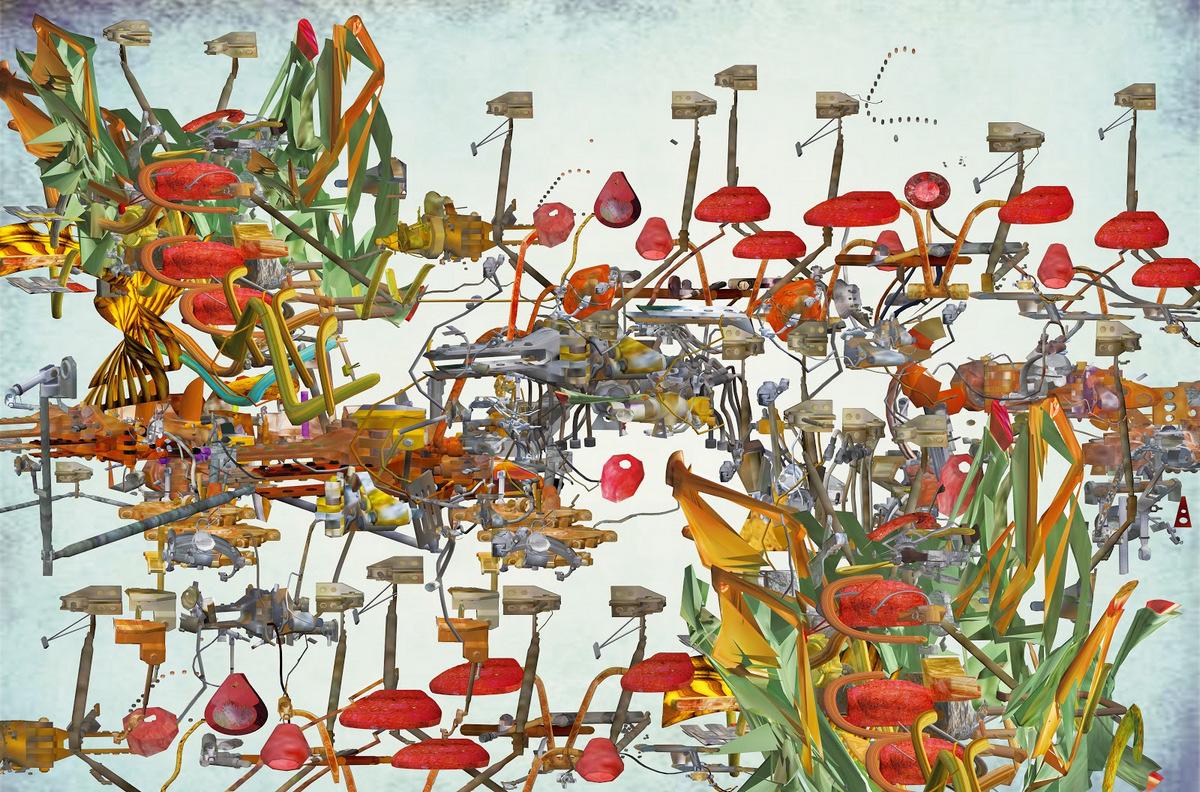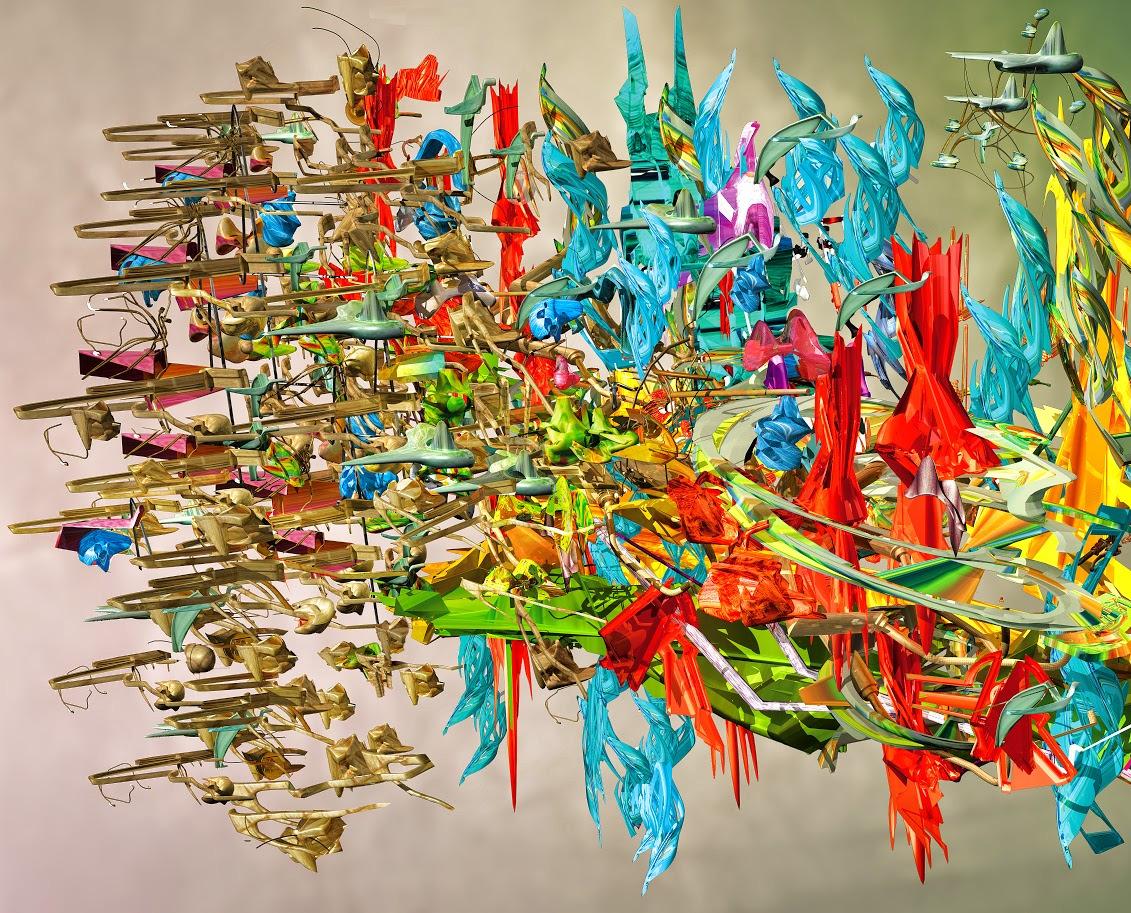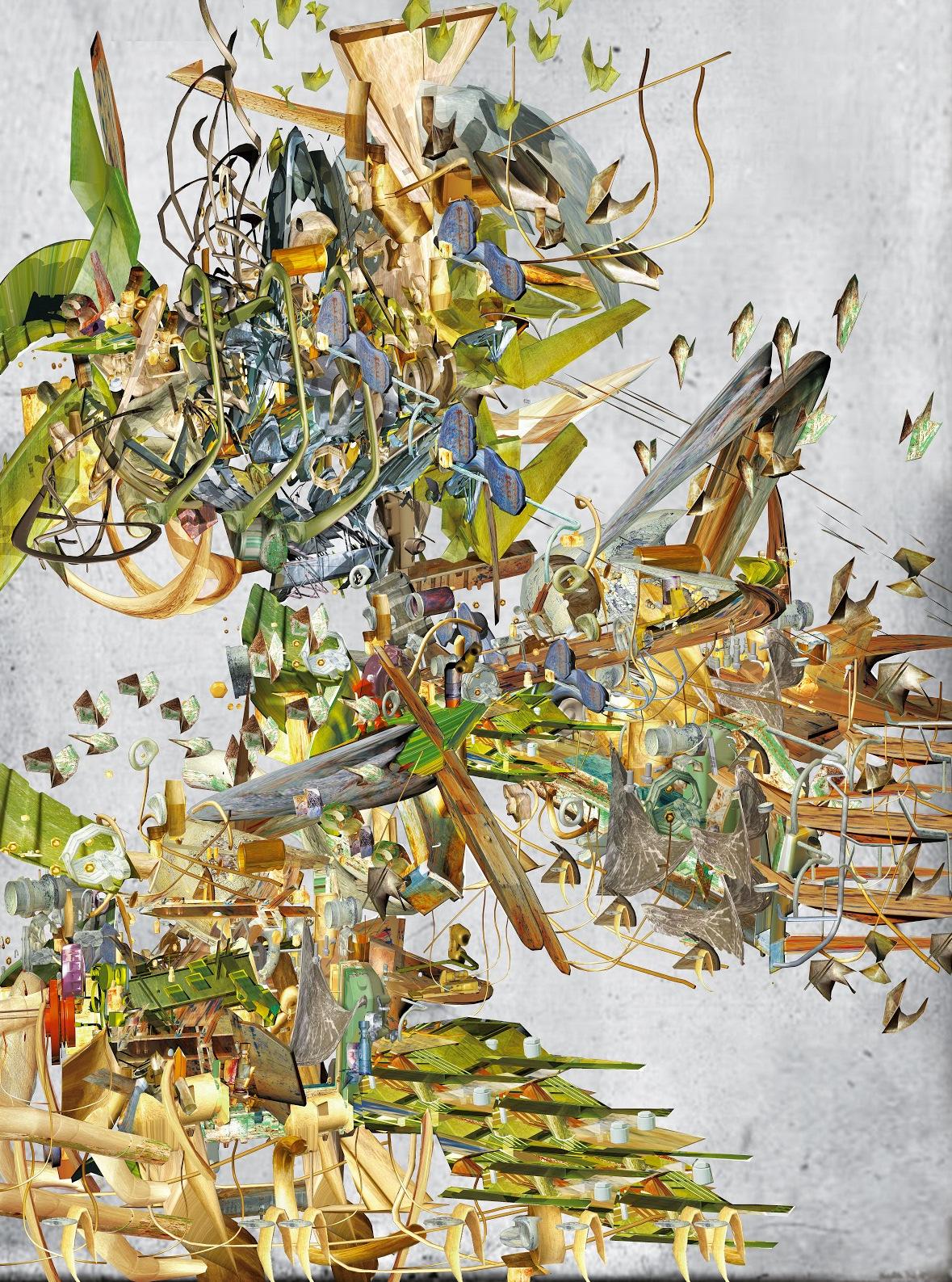An interview with Ryota Matsumoto

Ryota Matsumoto is not just an interesting artist, but also an accomplished designer and urban planner: the deep symbiosis between elements from Architecture, Design and Technology allows the viewer to perceive the subtle but undeniable continuity between tradition and modernity. Through a refined approach in which techniques from opposite disciplines as graphite drawing and algorithmic processing, merge together in an harmonious combination, he gives life to a multi-layered experience and effectively stresses the way in which our perception of abstract shapes depends on cultural perspectives It is with a real pleasure that I would like to introduce our readers to his stimulating works.
Hello Ryota, and welcome to ARTiculAction. I would start this interview with my usual introductory question: what in your opinion defines a work of Art? By the way, what could be in your opinion the features that mark an artworks as a piece of Contemporary Art?
Hello, Thank you for giving the opportunity to talk about my work. I always perceive art as a means to mirror and reflect socio-economic and cultural substrates in the past, present and possibly future from one’s unique point of view. I believe the most successful art transmits ideas and values inherent in our culture across the wide span of space and time. That is why great works of art manage to stay relevant for a long time to come.
In the ideal world, we could examine the past, interpret the present and even conjecture about the future strictly within the framework of single piece of art.
To a large extent, Contemporary Art could be defined as fine art that manages to explore timeless themes with the use of current technologies or drawing techniques. Of course, there are also impending issues of multiculturalism, globalization and ecological concerns that we might need to address with particular emphasis in order to meet the criteria of Contemporary Art, but I always consider a guiding principle that defines art, remains the same for centuries and Contemporary Art is no exception for sure.
Would you like to tell us something about your background? You have a very solid education, and after your studies at Architectural Association in London and Mackintosh School of Architecture, Glasgow, you degreed with a Master of Architecture from University of Pennsylvania. How have these experiences impacted on your developement as an artist
ARTiculAction
Ryota Matsumoto
An interview by Dario Rutigliano, curator
and on the way you currently produce your artworks?
I believe all the schools help me establish my own perspective and identity for working in the creative field one way or the other. I’d also like to point out that every school has their own unique direction and strength in pedagogical approach that is attributed to their culturally diverse student body and specific geographical location of the school. These school characteristics allow me to learn and explore the various facets of creativity and innovation in Architecture and Art. At any rate, the most important lesson that I learned from my
education comes down to always being open minded to new and different ideas. It definitely supports my broad outlook on life as well.
Before starting to elaborate about your production, would you like to tell to our readers something about your process and set up for making your artworks? In particular, what technical aspects do you mainly focus on your work? And how much preparation and time do you put in before and during the process of creating a piece?
I use several different mediums and always avoid being overtly systematic. So I take on a different approach for every work. As far as

Ryota Matsumoto ARTiculAction
the High Overdrive and Its Undefinable Consequence Mixed Media 141221 79cmx119cm
common factors among my work are concerned, I always employ a hybrid technique that blends traditional techniques with digital media. That is actually the most crucial aspect of my work. The hybrid technique allows me to add a warm human touch and layers of texture to a precision of digital drawings. I usually need a few days for preparation. However, I take an improvisational approach to my painting occasionally. In that case, I am less preoccupied with technical and compositional issues.
Now let's focus on your artistic production: I would start from "Hollow Ghosts for Those Restless Spirits" that our readers have already started to get to know in the introductory pages of this article: and I would suggest to our readers to visit yur website directly at http://ryotamatsumotostudio.blog spot.it/ in order to get a wider idea of your artistic production... In the meanwhile, would you like to tell us something about the genesis of these works? What was your initial inspiration?
I believe one of the most important aspects of creating art is intuition and the other aspect is one’s personal experience and individual background. In my case, my over twenty years experience in architecture and urban design play the pivotal role in my creative process and inspiration. With this work, I am inspired by the relationship of people to architecture in modern urban settings and also captured the snapshot of the rapid changes of cityscapes with the depiction of

ARTiculAction Ryota Matsumoto

Ryota Matsumoto ARTiculAction
the Intersection of Infinite Planes, Medium: Mixed Media, Year: 2014,

Dimensions: 27inx47in
various forms in the assembly/disassembly procedures.
One of the features of the Intersection of Infinite Planes that has impacted on me is
the way you effectively challenge the dichotomy between the perception of the real and the oniric dimension...so I would like to ask you if in your opinion personal experience is an absolutely indespensable part of a creative process... Do you think that
ARTiculAction
Ryota Matsumoto
a creative process could be disconnected from direct experience?
I’ve often worked with contemporary ethical and aesthetic values of cities and their rapid developments which can be characterized by
the Indistinct Notion of an Object Trajectory Mixed Media 141210 75cmx56cm

dichotomy and contrapuntal relationship among organic and inorganic, structural and amorphous as well as small/personal objects and large structures. These polar opposite elements could integrate with each other and morph into totally new structures in my paintings. My direct experience can be defined as a springboard for triggering initial inspiration. Then my imagination takes it further beyond my experience.
Multidisciplinarity is a crucial aspect of your art practice and maybe because I have a scientific background, I'm always delighted to come across an interesting example of how Art and Technology can establish an effective symbiosis, as in the interesting "Those Who
 Ryota Matsumoto
Ryota Matsumoto
Affirm the Spontaneity of Every Event", where you have created a rich combination between traditional materials as ink, acrylic, graphite and digital media so I would take this occasions to ask what's your point about this fruitful contamination...

By the way, while crossing the borders of different artistic fields have you ever happened to realize that a symbiosis between different disciplines is the only way to achieve some results, to express some concepts?
The hybrid technique comes naturally to me
since I’ve worked as a designer and an artist for quite a while. The confluence of seemingly opposing techniques are aimed at achieving both earthiness/warmness of traditional painting and delicate complexity of digital art in my work.
I think we can no longer rely on onedimensional/ traditional representational systems to decipher and depict the intricacies of our contemporary society and the humanization of digital technologies are certainly indispensable for venturing into the new paradigm of fine art.
ARTiculAction Ryota Matsumoto
Those Who Affirm the Spontaneity of Every Event Mixed Media 140821 84cmx119cm
Another interesting pieces of yours on which I would like to spend some words are entitled "the Hanging Gardens of Ancient Creek" and "Stretched into an Infinite Vapor of Spectral Resonance": one of the feature that has mostly struck on me is the dynamicity, the sense of movement that you have been capable of impressing on the canvas... and I have highly appreciated the nuance of intense red which, combining with vivid tones, creates an interesting synergy rather than a contrast, and especially on the neutral background: by the way, any
comments on your choice of "palette" and how it has changed over time?
I have tendency to use the color of stark contrast to create the sense of movement and dynamism to the overall composition. That being said, the subtle difference in color is also applied to express a sense of depth and to give the clarity to figure-ground relationship.
I have highly appreciates the way your multilayered approach is capable of bringing an high level of significance to abstract shapes:

ARTiculAction
Ryota Matsumoto
the Hanging Gardens of Ancient Creek, Mixed Media 141207 84cmx119cm



ARTiculAction Ryota Matsumoto
and I would go as far as to state that in a certain sense your works urge the viewers' perception in order to challenge the common way to perceive not only the outside world, but our inner dimension... By the way, I'm sort of convinced that some informations & ideas are hidden, or even "encrypted" in the environment we live in, so we need -in a way- to decipher them. Maybe that one of the roles of an artist could be to reveal unexpected sides of Nature, especially of our inner Nature... what's your point about this?
My artworks embrace and transmit everdiversifing interdisciplinary views on the urban milieu in which we live in today.
At the same time, there are also more personal works which are generated from their own narrative structures to stand on their own as individual entities. So I’d say most of my work are often layered with multiple meanings and are also very much open to anyone’s interpretation simultaneously.
As you have stated once, your current interest gravitates around the embodiment of cultural possibilities in art, architecture, and urban topography: I can recognize in this a socio politic feature and although I'm aware that this might sound a bit naïf, I have to admit that I'm sort of convinced that Art -especially nowadays- could play an effective role in sociopolitical questions, as in human rights issues: not only just by offering to people a generic platform for expression... I would go as far as to state that Art could even steer people's behaviour... what's your point about this? Does it sound a bit exaggerated?
I am much more interested in the psychological effects of art and how it changes and affects one’s aesthetic experience. To a large extent, this also involves how people relate themselves to art in the context of their everyday lives. I wouldn’t go so far as to say art is able to steer one’s view towards sociopolitical agendas.

Ryota Matsumoto ARTiculAction

Space Station Talks Visualized From Orbiter Mixed Media 150111 71cmx118cm

You are an accomplished artist and a principal of an award-winning design office: during your career your works have been shown in several occasions: it goes without saying that feedbacks and especially awards are capable of supporting an artist: I was just wondering if the expectation of a positive feedbackcould even influence the process of an artist... do you take the audience into account when you are planning or creating a piece?
It is almost impossible to please everyone with my art. Hopefully, it appeals to a certain people and that is something I might take into consideration, while working on a piece.
Thanks a lot for your time and for sharing your thoughts, Ryota. My last question deals with your future plans: what's next for you? Anything coming up for you professionally that you would like readers to be aware of?
It is always my pleasure!
I’ve been working on a collaborative project with both industrial designer and architect for a while.
There will also be exhibitions of my work in Italy and the United States this year.

ARTiculAction Ryota Matsumoto Our Perceptions Lay Bare as Incongruent Swashes Pass Overhead Mixed Media 150226 77cmx119cm

ARTiculAction Ryota Matsumoto









 Ryota Matsumoto
Ryota Matsumoto









